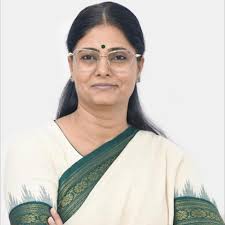
India Sees Sharp Decline in Out-of-Pocket Health Spending, Thanks to Government Initiatives
In a major relief for citizens, India has witnessed a consistent decline in out-of-pocket expenditure (OOPE) on healthcare, according to data presented by Union Minister of State for Health and Family Welfare Anupriya Patel in the Rajya Sabha. As per the latest National Health Accounts (NHA) estimates, OOPE as a percentage of total health expenditure (THE) has dropped from 62.6 percent in 2014-15 to 39.4 percent in 2021-22. Alongside this encouraging trend, government health expenditure (GHE) has increased significantly, rising from 29 percent of THE in 2014-15 to 48 percent in 2021-22.
The decline in OOPE can be attributed to the government’s focused efforts on strengthening healthcare infrastructure, expanding coverage, and making essential services more affordable and accessible. The Ministry of Health and Family Welfare has launched multiple national programs to ensure that quality healthcare reaches every citizen, especially those in rural and underserved areas.
Under the National Health Mission (NHM), the government has worked in close partnership with states to improve health infrastructure and human resources. Through initiatives like the National Free Drugs Service and Free Diagnostic Service, patients visiting public health facilities are provided with essential medicines and diagnostic services at no cost, thereby reducing the financial burden on families.
In addition, over 1.76 lakh Ayushman Arogya Mandirs (AAMs) have been established by transforming sub-health centres and primary health centres across the country. These centres deliver comprehensive primary healthcare services, including preventive, promotive, curative, palliative, and rehabilitative care. Such services are offered free of charge, bringing quality healthcare closer to communities and significantly reducing healthcare expenses.
The government has also launched the Pradhan Mantri Ayushman Bharat Health Infrastructure Mission (PM-ABHIM), aimed at enhancing the capacities of primary, secondary, and tertiary healthcare systems. With a total financial outlay of Rs. 64,180 crore, the mission focuses on building robust health infrastructure to detect and manage new and emerging diseases.
Another milestone initiative, the Ayushman Bharat Pradhan Mantri Jan Arogya Yojana (AB-PMJAY), is providing health coverage of Rs. 5 lakh per family per year for secondary and tertiary care hospitalization. This scheme benefits around 55 crore people from 12.37 crore economically vulnerable families, covering the bottom 40 percent of India’s population. Recently, the government expanded the scheme to include six crore senior citizens aged 70 and above, irrespective of their socio-economic background, under the AB-PMJAY with the Vay Vandana Card.
Furthermore, to make medicines more affordable, the government has implemented the Pradhan Mantri Bhartiya Janaushadhi Pariyojana (PMBJP), which makes quality generic medicines available at affordable prices. In addition, AMRIT (Affordable Medicines and Reliable Implants for Treatment) pharmacy stores have been set up in various hospitals and institutions to ensure that essential drugs and implants are accessible to those in need.
These concerted efforts reflect the government’s commitment to making healthcare affordable and reducing the financial burden on Indian families. The continuous decline in OOPE and rising government health expenditure are clear indicators that the country is steadily moving toward achieving universal health coverage and better health outcomes for all.